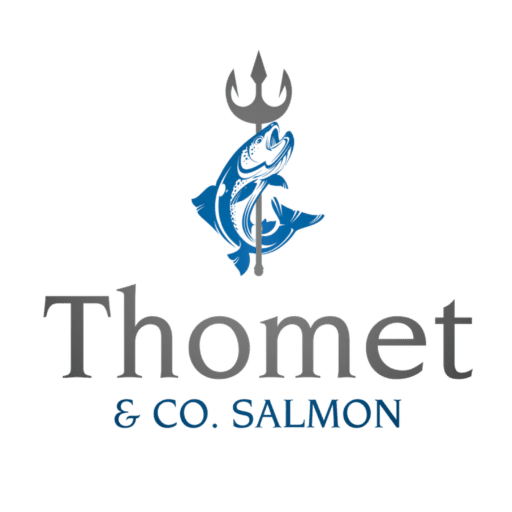Answering your questions
I am a restaurant, food truck, cater, etc. do you provide commercially?
Yes, please contact us directly for pricing and availability.
Wild Sockeye Salmon Nutrition Information
Whether you’re a runner, swimmer, boxer, mathematician, neurochemist, or just an overall health freak and go-getter, Wild Salmon covers a powerhouse of nutritional necessities that help you stay fuelled and on top of your health throughout the day. The rich marine Omega-3 fatty acids in salmon promote brain health, skin radiance, hair moisture and bolster cardiovascular health and blood flow, helping reduce inflammation and boosting muscle recovery! Regularly adding Omega-3’s to your diet positivly impact on reducing depression and improving focus, keeping you on top of your game and ready to meet the day.
Do you use your hands to make a living? From gnarl-handed fisherman to woodworkers, arthritis can be a real damper in your day, but luckily
omega-3s greatly improve joint integrity and can help to reduce the inflammation that comes with the job.
Often spend your days inside wishing you could get out in the sun? Well, it not quite the same, but one 3.5oz serving of Wild Salmon contains from 700-900 IUs of Vitamin D3 (compared to the 200IUs found in farmed salmon), which is essential in maintaining bone strength and growth, allowing for calcium to be processed by your body.
Pregnancy: pregnant mothers can benefit from adding Wild salmon to their diet, helping to improve a developing child’s hand-eye coordination and overall health.
Dunstan, J.A. & Simmer, Karen & Dixon, Glenys & Prescott, Susan. (2008). Cognitive assessment of children at age 2½ years after maternal fish oil supplementation in pregnancy: a randomized controlled trial. Archives of disease in childhood. Fetal and neonatal edition. 93. F45-50. 10.1136/adc.2006.099085.
Wild Alaskan Sockeye Salmon Nutrition facts: Cooked, 3 oz./ 85 g
Calories: 130, Protein (g): 23, Fat (g): 5, Saturated Fat (g): 1, Sodium (mg): 80, Cholesterol (mg): 50, Omega-3s DHA+EPA (mg): 730, Vitamin B12 (mcg): 3.8, Vitamin A (mcg): 50, Vitamin D (mcg): 14.2, Selenium (mcg): 30, Potassium (mcg): 370, Iron (mg): .4, Calcium (mg): 10
| Source: USDA Standard Reference Release 28 | Rounded per FDA guidelines
When will my salmon be shipped?
Shipping starts mid-September and we only ship on Monday’s. We use biodegradable and recyclable products packed with dry ice to ship our salmon. You’ll receive an email as soon as it is on its way.
What type of salmon are the filets and smoked salmon?
Wild Alaskan Sockeye Salmon, commonly referred to as Red Salmon amongst locals, and an Alaskan favorite!
Do you use food coloring or a dye for your salmon?
No sir. Salmon raised on a salmon farm have dye added to their food. Farmed raised salmon meat is actually greyish and bland in color, this is because their diet does not consist of the natural food salmon usually eat while in the ocean. Our salmon’s natural rich color is a marker of their wild origin, so no food coloring is needed.
Is your salmon sustainable?
Yes. We consider a sustainable resource to be one that can be maintained through close regulation promoting increases in abundance from year to year rather than be depleted. Each season, Fish and Game limits fishing time until a certain number of salmon have escaped back into their given rivers, securing a healthy spawn for the coming year. Because we fisherman all do our part to follow these regulations, over the past 20 years, the Bristol Bay sockeye salmon run has seen a 10,000,000 fish average increase in total returns. Without management, a fishery can easily become over fished and fall prey to the greed of others, making it essential to responsible harvest. Bristol Bay Regional Seafood Development Association provides scientific evidence to support the sustainable fishing practices in Bristol Bay. Check it out at BBRSDA.com!
Do you use biodegradable nets?
No, our nets are made of nylon. We too are concerned about the global epidemic of waste in the ocean. All of our gear complies with Alaska state regulations, and is heavily marked with our fishing permit information, so if the unfortunate situation was to occur and we lost gear we would be identified and steeply fined. Plus, the buoyancy of the nets keeps them on the surface, making them easy to identify and revover on the off chance they are detached from the boat. There are also web recycling programs in place in Alaska, as well as Seattle, so all used netting is collected and recycled, making sure it doesn’t end up back in the ocean, or in the landfill!
